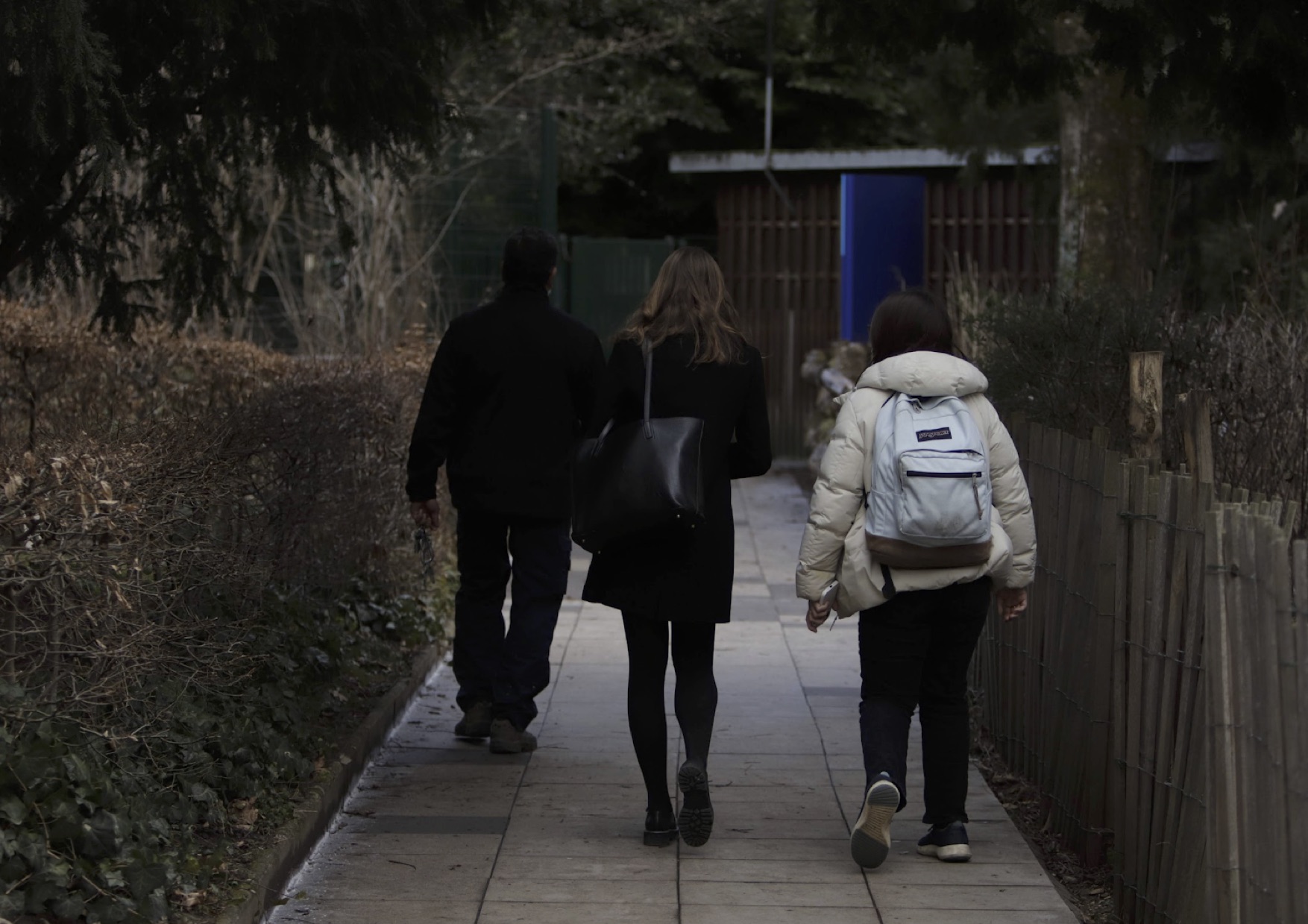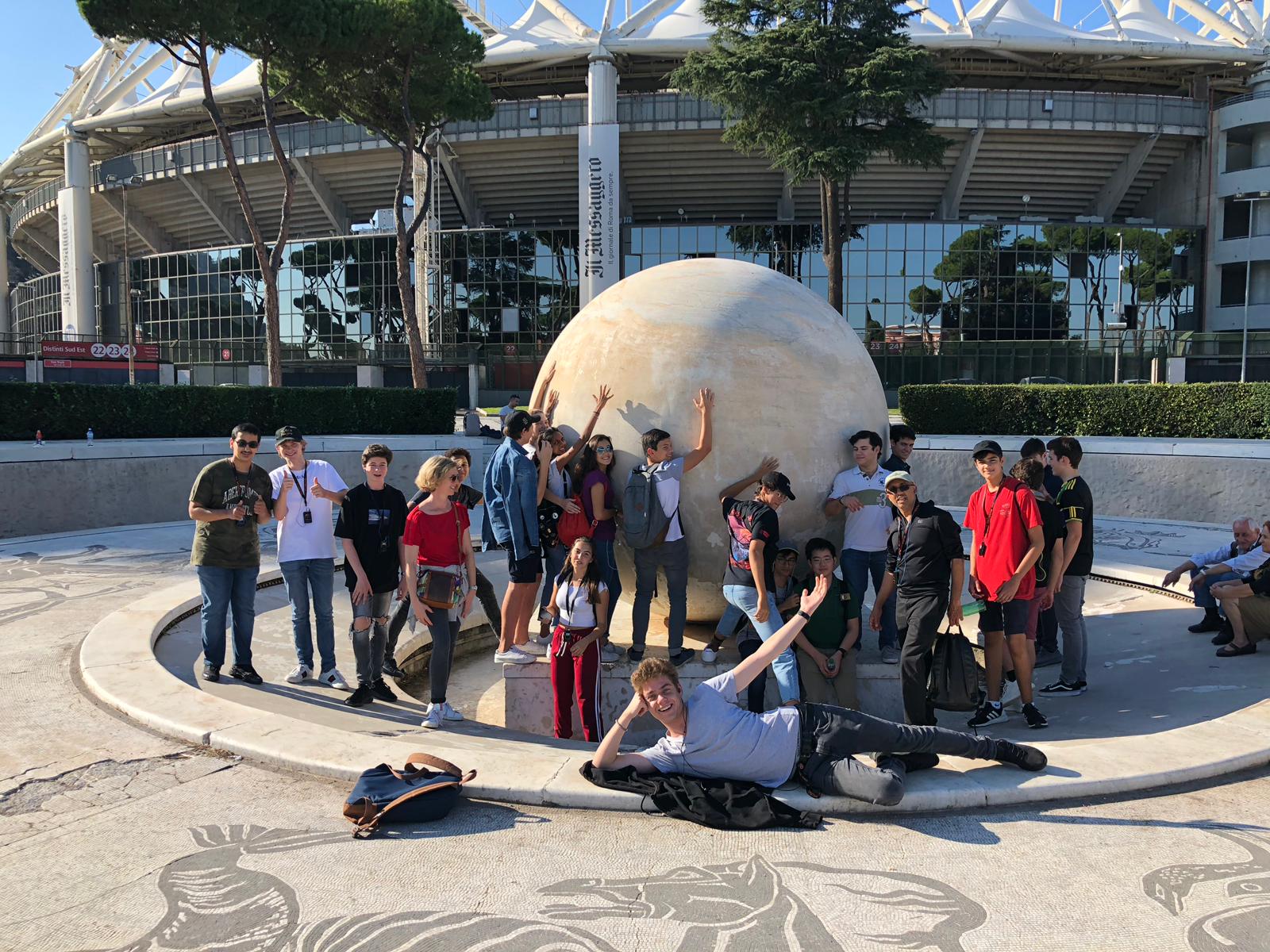By Sabine Ebanks & Emma Pavanello, Year 11
We recently took a tour around LGB to uncover some of the lesser-known corners of our campus; most of which are hidden in parts of buildings that we visit every day.
Many thanks to Izhar Khan, one of the school’s caretakers, for very kindly taking the time to show us around, and provide us with many fascinating stories from his 27 years of experience working at LGB! Finally, thank you to Owen Button, Year 11, who kindly agreed to come along last-minute to take photos of all the interesting spots.
The Château
The Château is one of the oldest buildings on campus, dating back to the 18th century. Students who take history have probably heard about its colourful past: from being the home of a philosopher to its role as the former Italian consulate in Geneva. Next time you’re heading to a class there, look above the door to see the emblem of the house of Savoy engraved in stone, a reference to Geneva’s connection to the renowned royal dynasty. But there’s also more to the Château than meets the eye, and its basement is the key to its fascinating past. On the tour, our guide lead through an unassuming door on the ground floor and down a flight of stairs to the basement, which used to be used as a wine cellar. It looked like it hadn’t changed much in the past few hundred years, with dirt floors and wooden beams visible above us (and so many cobwebs!). We saw how wide the building’s stone walls were, a souvenir from a time when heating was only available from fireplaces, and we could hear the ceilings creaking as people walked above us. Beyond the old cellar was the heating room, which took over from fireplaces to keep us warm, and also the oil reserves of the school, which could keep working for 2 years on their own. It turns out there was an entire underground world beneath the floorboards that we had no idea about!
The Tunnels
A few students have probably heard vague rumours about the tunnel system running beneath the school, but we can now confirm that these do in fact exist. Running between the Château, la Ferme, and the Vieille Maison, this network of low-ceilinged passageways have been dug into the ground and were at one point usable. Unfortunately, the passages between buildings have now been separated, but the individual tunnels do still exist. We would not recommend checking them out for yourselves, though they’re impossible to get to without a guide and also extremely cramped. We also wouldn’t be surprised if you found a dead mouse or two.
La Ferme
La Ferme is known to most students as the home of the school nurse’s office, although it also houses the PTA and a variety of other rooms. One of the most interesting places we saw was the Salle Stereva, a room that commemorates the history of Ecolint through posters of famous alumni and parents, as well as a school timeline, and a bookcase of famous novels written by (or about) Ecolint alumni. The room was built by a donation from Madame Stereva, one of the school’s earliest students, and it’s also next door to Mr Rodriguez’s office. Himself an alumnus of LGB, Mr Rodriguez is the archivist at LGB, as well as an English teacher, and he can always provide fascinating anecdotes about the school for those interested. Additionally, on the top floor of La Ferme, we discovered the staff relaxation room, where busy teachers can go to take a mindfulness break. We will definitely be asking our teachers if they’ve ever been.
The Vieille Maison
The Vieille Maison is another building with a historic past: in the 19th century, it was the home of Grand Duchess Anna Fyodorovna, the aunt of Queen Victoria. Nowadays, it is the center of our campus, home to the reception, the main offices of the direction, and the guidance department. However, we had no idea that it also used to be the home of LGB’s staff: for many years, employees of the school had the option to live in dormitories on the third floor of the Vieille Maison. There, they were each provided with their own room, each one with a sink and a cupboard, and they shared a communal bathroom. According to Mr Khan, the opportunity to live in well-appointed rooms on campus was appreciated by staff, who were often single immigrants from Italy, Spain, Portugal, and Austria. Mr Khan told us about two former employees, both from Spain, who met while working at LGB and eventually married and moved to their own home. He fondly remembered the sense of community that the dormitories fostered. Unfortunately, they were closed in the early 2000s and are now empty, having fallen into disrepair.
Our Favorite Discovery
Attached to the Vieille Maison is the staff building, where the admissions department for all of Ecolint is headquartered and there are staff common areas. Inside, through a normal-looking door is a narrow staircase leading to the top floor, where there are more former dormitories for staff. In one of those small rooms was our favourite discovery on the whole tour: “Massage Room #4”, where teachers used to be able to go if they were feeling stressed. One of LGB’s former employees, Sophie Butler, was a masseuse, and she used to provide her services free of charge to the staff within the comfort of the campus grounds. The room was fully furnished with a massage chair and very atmospheric, with relaxing pictures on the walls. We’d love to know which teachers took advantage of the offerings.
The Old GB
The GB has undergone quite a few modifications to accommodate the changing needs and developments of the school. Back when the school hosted boarding students, the attic was used as a storage locale for all luggage and items that were rarely used. The top floor of the GB where today’s geography classes take place used to be the old dormitories. These were separated into two sections, one side for boys and one side for girls. This is why there are two staircases in the GB, one was on the girls’ side and the other on the boys’ side. Going along with these changes, the principal’s office used to be in today’s learning center. The cafeteria used to be located in the Pavillion des Langues. The GB basement, which is now mostly used for the bookroom and storage, used to be the kitchen’s staff changing rooms and bathrooms but also as a laundry room for boarding students.
The Bomb Shelter
Back in the 70s and the 80s bomb shelters were required in new constructions due to the potential threat of a nuclear attack. Due to this requirement, our school has 3 bomb shelters. The buildings that have bomb shelters are the Salève, the Middle School and the Primary School. The bomb shelter doors are filled with concrete and sealed because of the possibility of nuclear waste. The bomb shelter air rotation system wouldn’t let any air in but brought air out, the filters needed to perform this would last up to 20 years. These bomb shelters are very spacious and could be inhabited for long periods of time and could accommodate quite a large number of people. The bomb shelter would not only be open to students and members of the school but also citizens in the vicinity of school grounds.
This tour has shown us how lucky we are to attend classes every day on a campus with a history as rich as ours. We hope that we have piqued your curiosity, and that next time you’re sitting in class or walking across campus, you take a moment to wonder what may be below your feet, behind the wall, or above your head – you might be standing in the former home of a duchess, an Italian consulate, walking on top of a hidden tunnel, or beneath a massage parlour.



